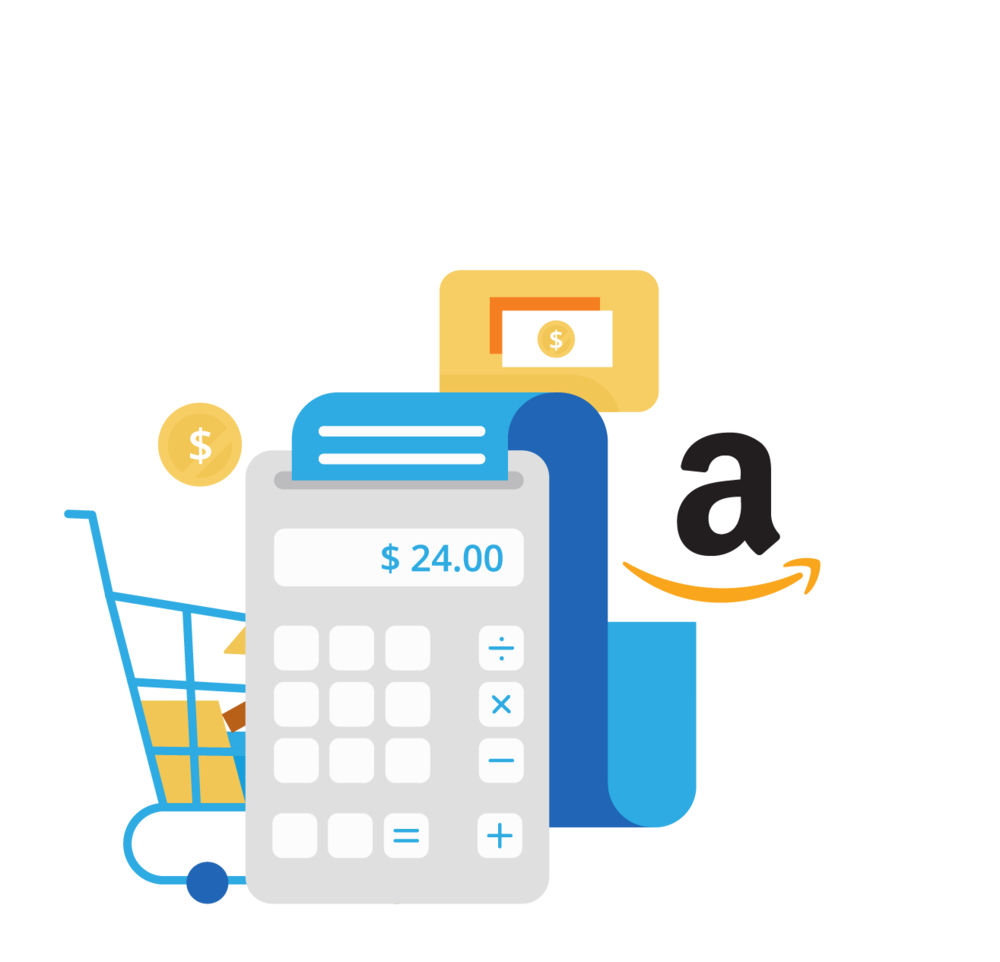The Accountant’s Guide to Ecommerce Trends in 2023
“If you’re on the right track, don’t just sit there or you’ll get run over.”
- Will Rodgers.
Industry moves fast. That’s true across the board.
But ecommerce? That’s on its own trajectory - one that seems to be on steroids. So for accountants helping business owners keep up, what do the challenges look like?
As an accountant, how do you anticipate what’s going on in the industry in order to offer your clients the best ecommerce accounting solutions that you can?
In this guide, we talk about some of the latest industry trends and how this will likely impact the ecommerce accounting services that today’s clients will be looking for.
In this blog, the last of our ecommerce accountants hub series, we explore the wider ecommerce industry and its accounting evolution:
Table of Contents
Become an A2X Partner
Join the A2X Partner Program to build your expertise, grow your client base, find community, and earn discounts.
Join now
The Impact of Ecommerce on the Accounting Industry
In a literary review published in 2004, the following predictions were made about how the accounting industry would need to meet the unique demands of ecommerce:
“Management accountants must be aware of the company’s strategy and how the Internet fits into the company’s business. They must also be able to integrate accounting software that can track sales orders and customer data.
Internal auditors must understand the laws relating to sales and ensure the company website is secure and trustworthy.
These services create new opportunities for CPAs and licensed accounting firms.
Tax issues are also emerging that governments and tax professionals must resolve.
The increased technology and change in which global business is conducted will expand accountants’ duties and offer new challenges.
Accountants must be informed about various ecommerce strategies in order to advise management on the best and most profitable way to enter into the world of ecommerce.”
Back in 2004, Amazon was bringing in about $7 billion - petty cash compared to the almost $400 billion it brings in today.
Ecommerce was still finding its feet: Shopify hadn’t been launched yet, and neither had Etsy nor Walmart Marketplace.
Yet this 2004 prediction was pretty spot on, and the challenges for ecommerce accountants remain largely the same today.
Roles have evolved from number crunching to business strategy, against a backdrop of a rapidly evolving industry with many different facets, spanning the globe and open to anyone.
With the rise of automation technology freeing up ecommerce accountants to offer more, the question may be: exactly what does “more” mean?
What is it that ecommerce clients are coming to their accountants for today, and how can you best anticipate their needs as they evolve?
What COVID-19 Really Meant for Ecommerce
Ecommerce was one of the few industries on earth that grew during the pandemic. By its very socially-distanced nature, it already possessed the perfect infrastructure to facilitate our lockdown retail lives.
“At the height of the COVID-19 pandemic, 10 years of ecommerce growth happened in just 90 days.”
We know that online retail was already growing - long before we were wearing masks everyday. Ecommerce sales doubled in the few years leading up to the pandemic, providing consumers a convenient outlet with quick shipping times and almost limitless choice.
Then, as COVID hit and we were forced indoors, we weren’t only buying more online, but around 150 million more consumers who had never shopped online before were opting for ecommerce retail too.
Not only that, but people also shopped overseas more. Cross-border sales increased by 21%, as did the usage of translation and currency converter apps.
There were peaks and troughs though; the industry and its various facets wasn’t on a total growth spree across the board. Certain categories (like apparel, and luxury goods) did see a decline in sales at times.
What we know to be true, especially after the year we just had, is that ecommerce requires savvy, agility and technical expertise to survive (and anticipate) the changing tides. It also requires a global mindset, one ready to expand markets, currencies, time zones and even languages - things that will affect accounting, and the things your clients need help with.
So let’s take a look at exactly what these changing tides are looking like today, and how your clients might need your support going forward.
The Emerging and the Exploding Trends
In Shopify’s Future of Ecommerce 2021 report, it lists the following five industry trends that we’ll explore in more detail:
You may notice one common theme running through these trends, and that’s competitive edge. With more sellers online than ever before, they need a way to stand out and attract their customers, which is manifesting in a number of ways.
For each trend, we’ll look at what’s changed to have brought it about and what this will likely mean for your relationship with your ecommerce accounting clients.
1. Staying competitive by going multi-channel
A significant number of ecommerce sellers are branching out.
As platforms become saturated and more opportunities to sell elsewhere open up, diversification has become a far more attractive strategy - one that now has the technology to facilitate it.
And with the constant threat that platforms like Amazon can close a seller’s business at any time, going multichannel seems not only a smart way to grow but a smart way to survive.
In their report of over 1,000 sellers, Sellbrite found that selling on multiple channels can have a big impact on sales and profit. But there are a number of hurdles involved in keeping track of sales and inventory from more than one channel.
What you could look to offer ecommerce sellers: An adept knowledge and understanding of how to account for multiple channels. Headless commerce is also projected to expand in the near future, so learning about the types of sellers that could benefit from this may also prove useful with your clientele.
2. CX is becoming more creative and innovative
The pandemic may have stimulated the growth of ecommerce, as well as an expansion in the types of products bought online. But to keep this increase steady as life returns to a new normal, digital customer experience needs to remain attractive and enticing.
Shopify is helping its sellers meet these challenges with integration of AR, chatbots and virtual shopping experiences, for example.
What you could look to offer ecommerce sellers: Some understanding of the options out there, what they’ll cost and how this will affect a seller’s bottom line.
Whilst it may not be your job to advise them about brand identity and customer journey, you will need to help them navigate whether the cost to their business could make competitive sense.
3. Fulfilment is becoming an attractive differentiator
“Today’s brand has a four-pronged fulfilment mandate: fast, free, sustainable and branded shipping.”
Your client’s customers expect them to offer free shipping in branded packaging, ideally mailed with environmentally friendly standards.
This increased pressure on their profit margin will likely encourage them to ask you for advice and help finding a sweet spot, particularly if they sell overseas.
As well as free shipping, customers are increasingly expecting free returns too, even internationally. Whilst consumers are getting a great deal out of shopping online, it’s harder for sellers to ensure they benefit too.
What you could look to offer ecommerce sellers: Advice on fulfilment strategy that doesn’t suffocate their profit margin. Where can they compromise, and what options do they have for affordable outsourcing?
And inventory management - what technology do they need to link this up with their accounts for streamlined, automated monitoring?
4. Personalization is becoming a selling point
We’ve already talked a bit about innovative customer experience strategies, and personalization goes hand in hand.
Tech is integrated in every aspect of our lives, and consumers are weary of it. What’s missing is the human element, and customers are willing to pay for a premium experience with a brand that has purpose.
But marketplaces like Amazon or eBay don’t give sellers the data they need to figure out who their customers are and what kind of experience they would want. Customers search marketplaces for solutions, not for brands.
“Strong brands recognize they have to get customers from a marketplace to their own properties so they can create a relationship with them that will last over time.”
What you could look to offer ecommerce sellers: Whilst a lot of personalization and customer journey design is a brand strategist’s territory, understanding how these impact profit margins for different types of sellers is yours.
Even if you can’t answer your client’s questions about what they can be doing better with regards to personalization, you can learn about and advise them on the factors they should weigh up with regards to their finances and investments to get the best outcome.
Which routes tend to be more lucrative and which might make a negligible difference?
5. Retention is a focus
As competition rises online, so do digital advertising rates. These are leading to a greater focus on existing customer rewards and incentives to keep spending.
Source: Shopify.
Customers don’t like ads either and have become more critical of, and opposed to, digital ads in recent years.
Instead of piling on the cash to acquire new customers, savvy sellers are looking at how they can maximize their existing customer base. They are doing this through reward schemes, incentivization and subscription models.
The latter in particular, poses an interesting topic for accountants.
What you could look to offer ecommerce sellers: Advice about what they can afford to offer their customers to incentivize them. Would a subscription model make sense, or a loyalty program? What would they need cash-wise to make these things realistic and profitable?
The Bottom Line
Your ecommerce clients need more from you today than number crunching.
They need wider expertise and a deeper understanding of the challenges of their industry.
They need you to be able to translate the above trends into what they mean for their accounts, how they can adopt them profitably and the financial pitfalls they need to avoid.
It’s all about standing out from the crowd, but these methods cost something, and without agile cash flow management, sellers won’t be able to invest in differentiating themselves.
And this year, that’s more important than ever.
Does Your Client Have Their Basics In Place Yet?
Do your clients use A2X for their accounts?
Free up your time and that of your clients by letting A2X automate their bookkeeping.
Settlements are summarized automatically, books organized via the accrual method, COGS tracked and their taxes and chart of accounts are mapped out so that you can skip to the good part and help them with strategy.
Find out how accountants are using A2X for their clients here, and start your free trial today.
Interested in becoming an A2X partner and getting listed in our directory? Contact us here.
Thanks For Visiting The Ecommerce Accounting Hub
This is the final guide in our Ecommerce Accounting Hub.
Ecommerce is a rapidly evolving industry, and the need for sellers and their accountants to stay informed is a constant challenge. This is why we created this hub and will be regularly updating it as more changes take place.
If you’ve been with us from the beginning of this section on Growing Your Accounting Practice, we hope you have found it useful.
To explore some of the accounting elements or the platforms themselves in more detail, check out the other sections of our hub below:
Become an A2X Partner
Join the A2X Partner Program to build your expertise, grow your client base, find community, and earn discounts.
Join now



